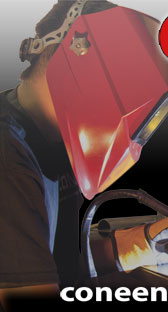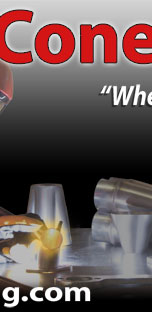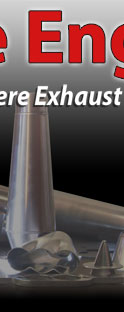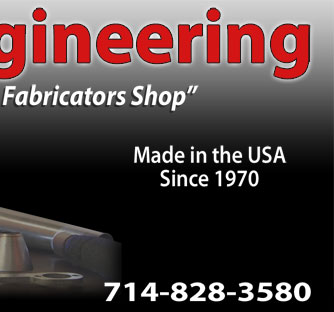|
This article is a follow-on to “Designing and Building a Motorcycle Header”. There are a few concepts developed in that first article that might be useful in understanding how the muffler and the header integrate. So if you haven’t already read through it, you might want to check it out first.
What we are going to cover in this section are the different styles of mufflers available, how they can affect the overall performance of your bike, and how to size your muffler accordingly.
In the Header section we covered different reasons for building your own exhaust system. When it comes to the muffler, you also can choose to purchase a pre-made “universal” muffler or build a muffler entirely from components.
If you are not familiar with design and fabrication of a muffler, you might want to seriously consider a universal. Muffler design can be quite complicated, involves a lot of components that need to fit together with tight tolerance yet at the same time allowing for the different growth rates of dissimilar materials. Also, muffler design can involve a greater amount of trial and testing to get a good design whereas a header is fairly straight forward.
It’s just a muffler isn’t it? Technically yes. There is only so much that can be done in the space available on a motorcycle. For this discussion we’re going to divide it up into two basic food groups: OEM Mufflers and Aftermarket Mufflers.
- OEM
For almost 30 years, OEM mufflers have had to meet a Federal EPA standard for sound emission. This generally forced OEM’s into a very restrictive and heavy muffler. On top of that, the pressure to contain costs usually led to designs that were easier to build and therefore cheaper to manufacture. The savings per unit may seem minimal but when multiplied by the large numbers produced, the savings are substantial.
- Aftermarket
Aftermarket mufflers face a hodge-podge of regulations, but normally they have been left to local enforcement, and that enforcement was very inconsistent. In 2013, California established that newly manufactured exhausts, regardless of the year of the bike they go on, have to meet the same EPA standard as OEM pipes. At the same time, the AMA has been working to establish a more accurate standard much like what is used to measure the sound level for Off Highway Vehicles, where a testing method and dB level established. Until a common approach is adopted we expect states and local municipalities to will continue to establish their own standards.
- Excessive Sound
Sound quality and absolute sound level are a very discretionary standard. What sounds great to one person could sound awful and be obnoxiously loud to the next person. We are constantly asked to describe the sound of mufflers and it is really impossible to do. Even sound clips have trouble capturing what the sound is really like. I think the only thing that compares to describing sound is trying to describe color – that hideous baby poop yellow you painted your bike is the color you always dreamed about, but to your friends…
With our pre-fabricated mufflers we strive to build a product with a distinctive visual look, with what we consider is a generally pleasing tone and try and be consistent in that sound from product to product. We tend to prefer a solid, tight packed sound that results from good exhaust gas velocity. This tends to make the bike easier to tune, easier to ride on the street, and will hopefully allow you to lug the motor a little when you need to “ride quiet” in a higher gear around people, but still allow reasonable performance when you choose to wind it out.
- Trade-Offs
In general, large diameter headers and mufflers make higher top-end horsepower and smaller diameters result in better bottom-end and mid-range. The bike’s use and the climate in which you are located can have a big impact on your results and must be taken into account when you design your build.
Likewise, that loud free-flow bike might pull a ton of power at full throttle on a dyno, but it may not be the best performer across the full RPM range and may not make you popular with non-riders, especially the guy whose bedroom window overlooks your driveway.
For many years, aftermarket builders competed for sales in the press purely on dyno results. Magazines lavished praise on horsepower and panned the unit that made 1 hp less at 9000 rpm – even if that exhaust made better power everywhere else on the power curve.
We try to keep our designs more real world. For those operating under higher performance conditions, we have the Max Performance series of mufflers that are more top-end, power-oriented. Next in line would be our 12” and 18” Straight Core mufflers, slightly quieter with a little less max power but tend to give better bottom-end and more mid-range power. Finally we have our Quiet-er Core series that are about as quiet as a compact muffler design can get while retaining some performance, along with keeping the conical appearance and weight savings.
- How Do You Make a Muffler Quiet?
There is only one proven way to make a muffler quiet. Make it big, make it heavy, and make it restrictive. Hence the design of OEM mufflers. Once you start removing these barriers, the exhaust naturally becomes louder. Trying to balance these factors is where R&D time goes and why mufflers seem expensive relative to their perceived simple design. For every muffler we manufacture, we generally throw out 10-15 other designs or variations on the design.
- “Muffler Packing” and “Removable Inserts”
Our mufflers use a stainless steel wool wrap around the core and no acoustic packing. In the testing we have done, mufflers in these sizes show minimal additional sound reduction when using an acoustic packing. Making the muffler repackable drastically raises the cost of the muffler along with the cost of the packing material for an insignificant benefit, so we’ve chosen not to offer it.
Likewise, the removable baffles you might see offered by other manufacturers also offer minimal sound reduction and add considerable cost. Again we chose not to go that route.
- “Universal Mufflers”
Not all “universal” mufflers are created equal. Universal often is applied to a part that supposedly can fit any and all manner of bikes. From a 100cc single cylinder to a 1000cc four cylinder. With some universal mufflers you get a one-size-fits-all design and a variety of different diameter shims that are supposed to make it perfect for your bike. But just because it can be made to clamp down on your header doesn’t mean that it really “fits” your bike.
- Cone Engineering Mufflers
We believe in designing a muffler appropriate to the header diameter that is being used (we are assuming that the header is the proper diameter for the application). We apply the term “Universal Fit” for our mufflers to mean that it hasn’t had brackets, mounts, etc. attached to it to fit specific years, makes, or models.
In addition, we have designed the muffler as a system. Each part in the muffler was considered in combination with all the other parts involved. We have allowed for differing expansion and contraction rates, general levels of performance, sound quality, and appearance.
- Build Your Own Muffler from Individual Components
In some cases we may not offer a finished muffler in the exact style or dimensions that you desire. If that is the case, you may need to fabricate your own from the list of components we offer. It will often require some pretty advanced fabrication and understanding how your design will react when assembled and installed.
So after all this you might be left wondering why you even started down this rabbit hole. Well for most of you it’s because you didn’t have a choice. For others it’s just because you like a challenge. Good! Because now you get to take some chances and see what happens!
|
|







